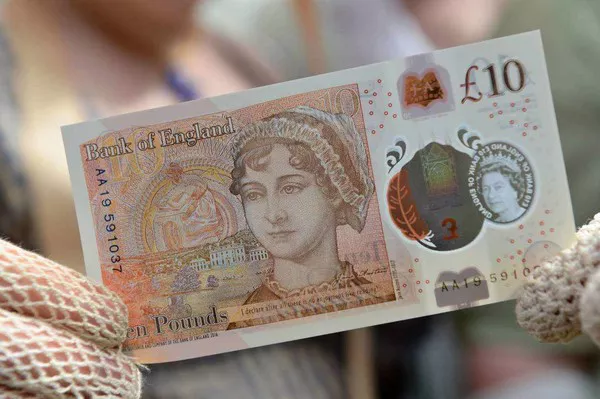The British pound sterling (GBP) stands as a symbol of stability and reliability in the world of international finance. To maintain this reputation and protect against counterfeiting, the Bank of England has continuously evolved and enhanced the security features incorporated into the currency. This article takes an in-depth look at the advanced security measures implemented in GBP banknotes and coins, ensuring their integrity and safeguarding against fraudulent replication.
The Ongoing Battle Against Counterfeiting
Counterfeiting is a persistent threat to any currency. As technology advances, counterfeiters become more sophisticated, making it imperative for central banks to stay ahead in the game of currency security. The Bank of England has consistently adapted its security features to outpace counterfeiters and maintain trust in the GBP.
Advanced Polymer Banknotes
In recent years, the Bank of England introduced polymer banknotes, a revolutionary change from the traditional cotton paper notes. These polymer notes offer several security advantages:
Transparency: Polymer notes are partially transparent, incorporating clear windows that are difficult to replicate.
Durability: They are more durable and resistant to wear and tear, ensuring that genuine banknotes remain in circulation for longer.
Security Thread: Polymer notes contain a thin, embedded security thread that runs through the note. This thread can be seen as a continuous line on the front and back of the note, and it changes color from purple to orange when tilted.
Raised Print: Polymer notes feature raised print on the words “Bank of England” and the denomination, providing a tactile feature that can be felt when touched.
Holograms and Color-Shifting Elements
To enhance security and deter counterfeiters, GBP banknotes include holograms and color-shifting elements:
Holographic Strip: The new polymer £20 and £50 notes feature a holographic strip on the front of the note. When tilted, the hologram displays different images, adding complexity to the design.
Color-Shifting Ink: On the new polymer £50 note, the Queen’s portrait and the large £50 denomination numeral change color from purple to green when the note is tilted.
Microlettering and UV Features
GBP banknotes also incorporate microlettering and ultraviolet (UV) features that are challenging to replicate:
Microlettering: Tiny letters are visible under a magnifying glass. These letters spell out the denomination and “Bank of England” on the new polymer notes.
UV Ink: GBP banknotes have UV ink applied to specific areas that fluoresce under ultraviolet light. This feature helps authenticate genuine notes and discourages counterfeiting.
Complex Watermarks and Raised Print
Watermarks and raised print provide additional layers of security:
Watermark: A watermark of the Queen’s portrait is visible when the note is held up to the light. This watermark is an integral part of the banknote paper and cannot be replicated with standard printing methods.
Raised Print: The denomination numeral on the front of the note is printed in raised ink, creating a tactile feature that can be felt when touched.
Polymer £50 Banknote Features
The new polymer £50 banknote, introduced in June 2021, incorporates advanced security features, including:
Holographic Strip: A holographic strip runs vertically on the right-hand side of the note. When tilted, it displays a multi-colored image of the coronation crown.
Advanced Raised Print: The raised print on the £50 note is more detailed than on previous denominations, making it even harder to replicate.
Color-Shifting Elements: As mentioned earlier, the denomination numeral and the Queen’s portrait change color from purple to green when tilted.
Coin Security Features
GBP coins also include security features to prevent counterfeiting:
Milled Edges: Coins have distinctive milled or reeded edges that make it difficult for counterfeiters to replicate accurately.
Bimetallic Structure: Many GBP coins, such as the £1 and £2 coins, have a bimetallic structure with two different metals, which adds complexity to counterfeiting.
Hidden Images: Some coins, like the £2 coin, have hidden images that can only be seen when viewed at a specific angle.
Microlettering: Tiny letters and numbers are often incorporated into the design of coins, making them difficult to counterfeit.
The Role of Public Awareness
While advanced security features are crucial in the fight against counterfeiting, public awareness also plays a vital role. The Bank of England, in partnership with law enforcement agencies, conducts public awareness campaigns to educate the public and businesses about the security features of GBP banknotes and coins. This helps individuals and organizations detect counterfeit currency and report it to the authorities.
Conclusion
The security features incorporated into GBP banknotes and coins represent a formidable barrier against counterfeiting. The evolution of these features reflects the ongoing commitment of the Bank of England to protect the integrity of the British pound and maintain public trust in the currency. As technology continues to advance, central banks will undoubtedly continue to innovate and adapt their security measures to stay one step ahead of counterfeiters, ensuring that genuine GBP banknotes and coins remain a symbol of reliability and trust in the world of international finance.


